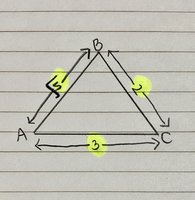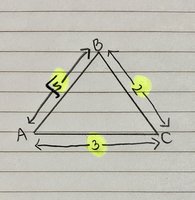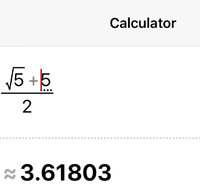Juri
New member
- Joined
- Nov 14, 2019
- Messages
- 27
This question was in my worksheet and I was wondering if I solved it right.
Question: Find the area of ABC where the length of 3 sides is AB = √5, BC = 2, CA = 3.

I used Heron’s formula. In order to apply it, I need 1/2 of the perimeter of the triangle (the value of S).
Formula: S = (a + b + c) / 2
•S = (√5 + 2 + 3) / 2
•S = (√5 + 5) / 2
•S = 3.62 (decimal form)
Heron’s formula: A = √S(S - a)(S - b)(S - c)
A = √3.62(1.38)(1.62)(0.61)
A = √4.94
A = 2.22
Therefore, the area of the triangle for this problem is 2.22. Please correct me if I am wrong.
Question: Find the area of ABC where the length of 3 sides is AB = √5, BC = 2, CA = 3.

I used Heron’s formula. In order to apply it, I need 1/2 of the perimeter of the triangle (the value of S).
Formula: S = (a + b + c) / 2
•S = (√5 + 2 + 3) / 2
•S = (√5 + 5) / 2
•S = 3.62 (decimal form)
Heron’s formula: A = √S(S - a)(S - b)(S - c)
A = √3.62(1.38)(1.62)(0.61)
A = √4.94
A = 2.22
Therefore, the area of the triangle for this problem is 2.22. Please correct me if I am wrong.
Last edited:


